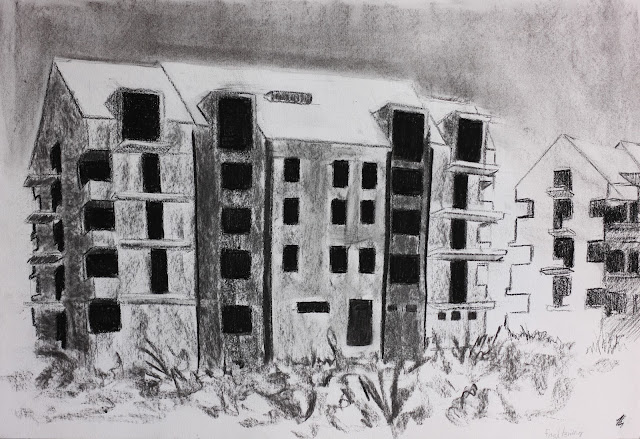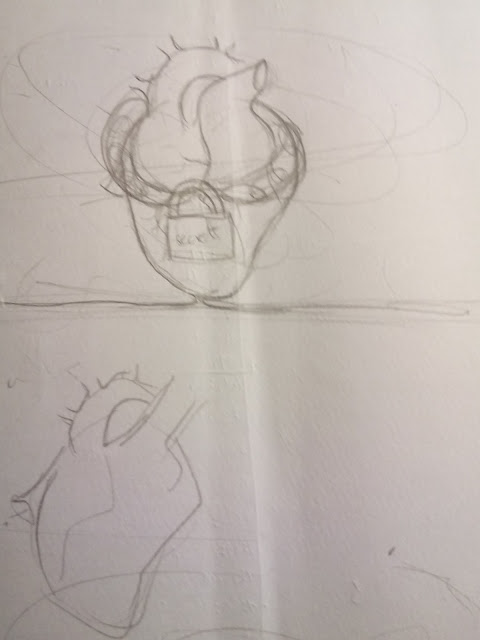Animation is a wide term. Basically, any form of art which is moving
could be considered to be animated. For a group that large, there should be a
way of systematising it. In his book on
the theory of animation, Understanding
Animation, professor Paul Wells suggests that all animated forms can be simply
sorted into two categories. Those categories are orthodox animation and
abstract/experimental animation. He briefly mentions a third category – developmental
animation, which should incorporate elements of both categories but does not elaborate further or mentions an example.
The different characteristics of each category are neatly summarised in a diagram (1998, p.36) that shows
them as exact opposites with the developmental animation balancing on a line
between the two. Wells later discusses and describes the individual elements, labelled by him as the Terms and conditions of
animation. (1998, p.36).
The
terms for orthodox animation would be configuration, specific continuity,
narrative form, evolution of content, unity of style, absence of artist and
dynamics of dialogue and the terms for abstract animation would be the
opposite, that is abstraction, specific non-continuity, interpretive form,
evolution of materiality, multiple styles, presence of the artist and dynamics
of musicality. While defining these phrases, he himself sometimes admits that not everything is as black and white as he
would like and that not all animated films strictly follow these ‘rules’. The
model Wells presents could work on some films, but it is flawed and going only
by the terms, many animations would not be
included in either category or in both categories and the developmental
category is so vaguely described it might as well not be described at all. There are, though, films that fit into those
categories well. For example, Steamboat Willie (Walt Disney Animation Studios,
1928) is a good example of orthodox animation. It uses narrative form, which
means that the animation is in the form of a story. Chases and conflicts
between characters are very common scenarios. The story is also continuous,
even though there are many different things going on it is easy to tell we are
still watching the same story. Even though the figures are not people we still
recognise them as characters and that means the film uses configuration.
Dialogue is not used extensively, but it is replaced by sound effects that
correspond to specific objects or actions. Even in the earlier films, we can already see the Disney Studios
style forming. The style remains the same throughout the film, signifying both unity of style and absence of artist, as
multiple artists worked on this piece, yet it looks as if done by a single
person and we cannot, therefore,
recognise the people who have worked on it. Abstract
animation could be represented by Walter Ruttmann’s Lichtspiel Opus (Walter
Ruttmann, 1921), which was the first publicly screened animation. It only consists
of circles, colours, flashing and moving shapes and all of that is accompanied
by music. It perfectly fits the criteria for abstract/experimental animation. There
are no figures or characters, only non-figurative shapes and forms in their
place. Although the animation progresses and changes, it does not have a narrative
and it doesn’t follow a story. The entirety of the animation is what the artist
thinks and feels, how he believes the music should be represented. Revolver by
Jonas Odell (Jonas Odell, 1993) could fall in the mysterious developmental
category. There are recognisable characters, the style remains the same, we
could talk about continuity, considering the years hinting at the passage of
time, but there is no immediate connection between the scenes themselves. The
animation doesn’t seem to have much in the way of a narrative aside from what
the viewers figure out by themselves. The soundtrack is a lot closer to music
than dialogue most of the time and when what could be called dialogue is used,
it does not make any specific sense. Although this categorization is not ideal, it certainly offers at least a basis
for sorting of the animated film. It might be also interesting to consider a
different way of categorising animated film, for example, the time period, it’s purpose, used medium or genre, and
then there is also a cultural aspect. Animation from Europe will not be the
same as animation from America or Japan as these are different cultures with
different values, art styles, levels of technical advancement and historical
backgrounds. While in America animation was popular for example in advertising, in Europe, a lot of
animation reflected, for instance, the
political situation. Either as a propaganda animation, which thrived for
example in the Soviet Union after it formed, or
like in other fields of art, in its abstract form as a way of protest
against the current situation.
Wells repeatedly declares that the
hyper-realist cel animation, such as the work of Disney or Warner Brothers, is
the dominant form overshadowing the much more artistic experimental approaches.
He agrees on that with historian William Moritz,
who suggests: “Non-objective animation is without a doubt the purest and most
difficult form of animation. Anyone can learn to “Muybridge” the illusion of
representational life, but inventing interesting forms, shapes and colours,
creating new, imaginative and expressive motions – ‘the absolute creation: the
true creation as Fischinger termed it – requires the highest mental and spiritual
faculties, as well as the most sensitive talents of hand.” (Moritz, 1988: 25)
Cel animation is without a doubt the best known and liked form of animation as it allows fast mass
production and works well for storytelling, for example for cartoons, but also
because it is more suitable for a casual viewer who is merely looking for
entertainment, not for any deeper meanings. Wells states that “Inevitably, the
amount of cheaply produced, highly industrialised cel animation made in the USA
and Japan has colonised television schedules, and perhaps, more importantly,
the imaginations of viewers.” (1998, p.35) and expresses his desire to bring
more attention to, in his opinion more valuable, abstract animation. Throughout
the book, Wells seems to be strongly against the orthodox animation and all it
has to offer. Again, agreeing with Moritz, that orthodox animation is basically
pointless because everything that can be
animated can also be done in live action and is,
therefore, not real art, unlike
experimental animation which requires higher level of skills. I personally do
not see the appeal of purely abstract animation. Certainly, there are people
who can appreciate it and both forms of animation have their place in the field
of animated film, but the way I see it, abstract
animation is meant more for its author rather than an audience. It could be
speculated that orthodox animation is made for the audience and its entertainment
while abstract animation, though shared with an audience, is created for the
animators themselves.
To
get back to the original question, certainly, the animated form can be
categorised to a degree and the theory of Paul Wells could serve as a
foundation for possible future categorisation systems if anyone ever attempts
to create them. It may have been easier in its beginning
before the technologies advanced too much and animation took on a life of its own. Nowadays, there is so much animation being
created in such a wide variety that some of it would probably fall in neither
or both categories defined by Wells.
(1219 words)
Bibliography
Wells,
Paul.(1998) Understanding Animation


















































